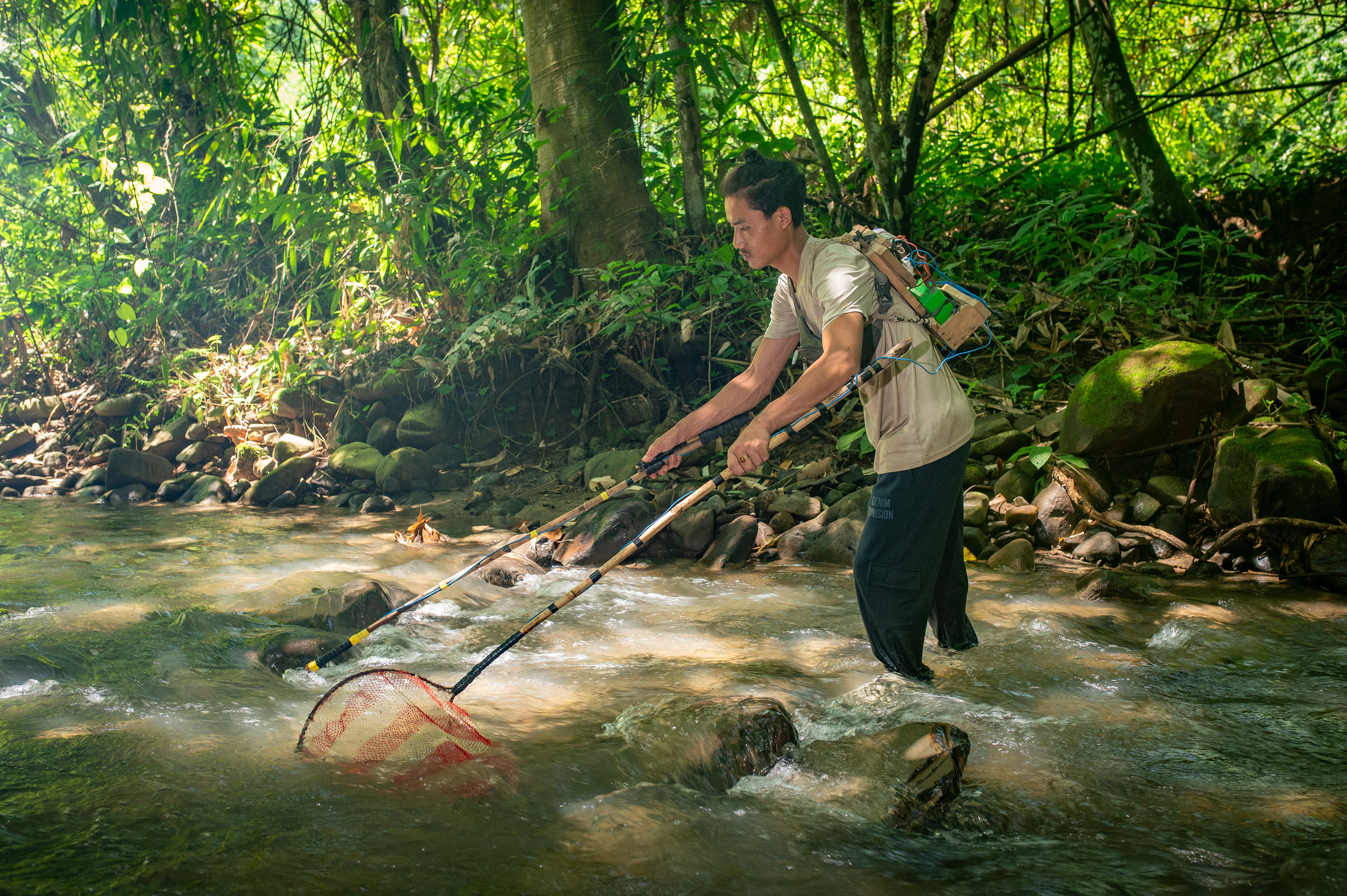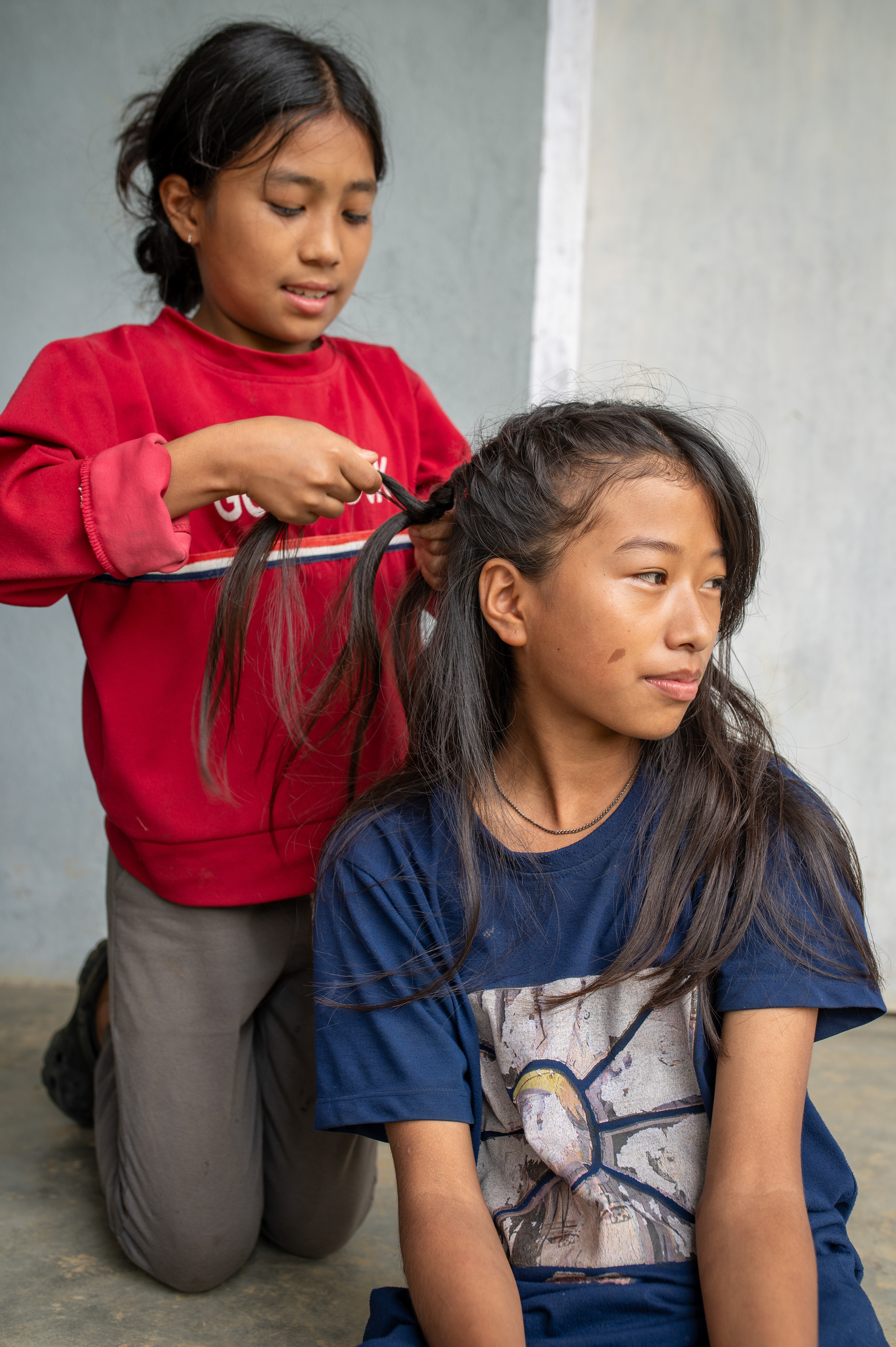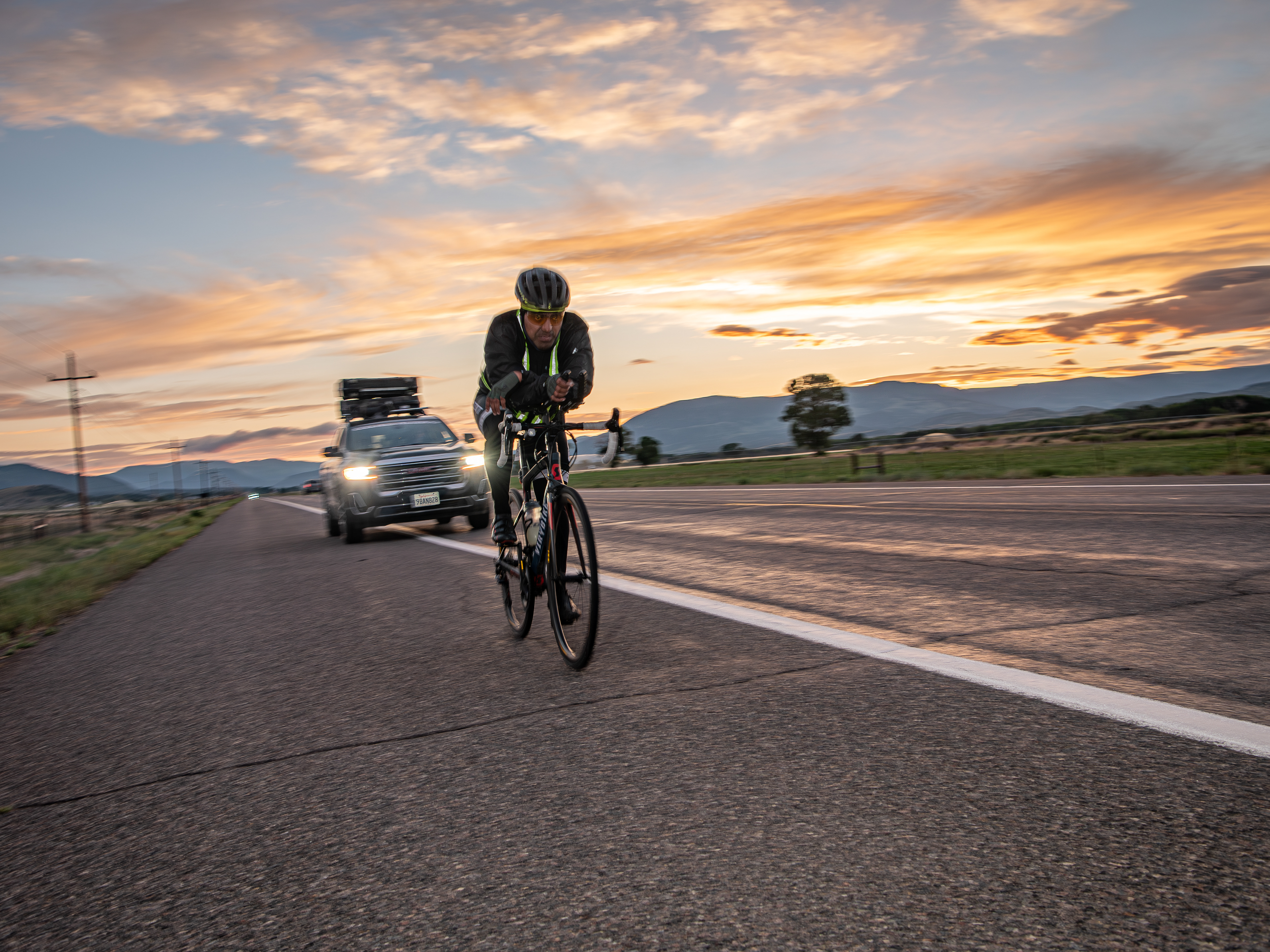Entangled Worlds: a Rice Grasshopper makes a home in the Jhum rice fields, where old clothes make for scarecrows.
A grasshopper, or "Khomun" in Lotha, perches on the fibers of a plantain tree, while a "Bubba Gump Shrimp Co." T-Shirt swings in the background due to the wind. Farmers use older clothes to hang in their fields to keep birds away from the crops - as a "scarecrow." Insects such as crickets, grasshoppers, katydids, and mantis make up the multispecies assemblage of the Jhum rice fields. The grasshoppers are attracted to the fields due to an abundance of food, and many birds are attracted to the fields due to the crops, but also due to these insects. The grasshoppers are encouraged to be here - many are caught and cooked - while the birds can harm the crop in major ways.
Phiro Village, Wokha, Nagaland. September 2024.
Phiro Village, Wokha, Nagaland. February 2024.


A Lotha hunter poses with a British-made rifle from back during the British Raj.
Hunters work on preparing their guns and ammunition for a hunt near the forest, surrounded by monoculture areca-nut plantations and wild flowers. Here, a hunter grinds his pellets with some gunpowder before loading his gun.
A young hunter looks at a century-old Headhunting helmet adorned with a primate skull and fur.






A member of the Village’s Development Board hands over old, unused register-books to children.

Lotha girl leaves a few caterpillars onto a tree to catch some sunlight.

Girl “listens” to the sound of the silkworm to determine if the caterpillars are ready to spin the cocoon.










